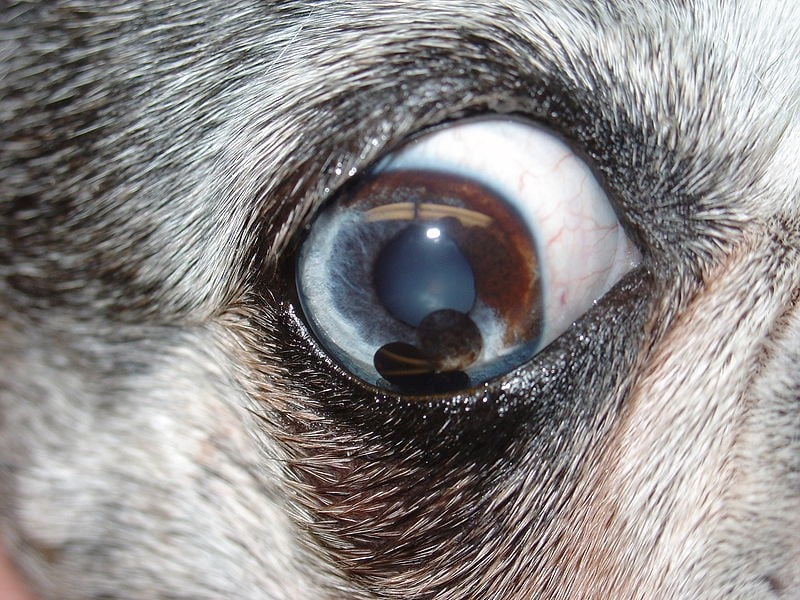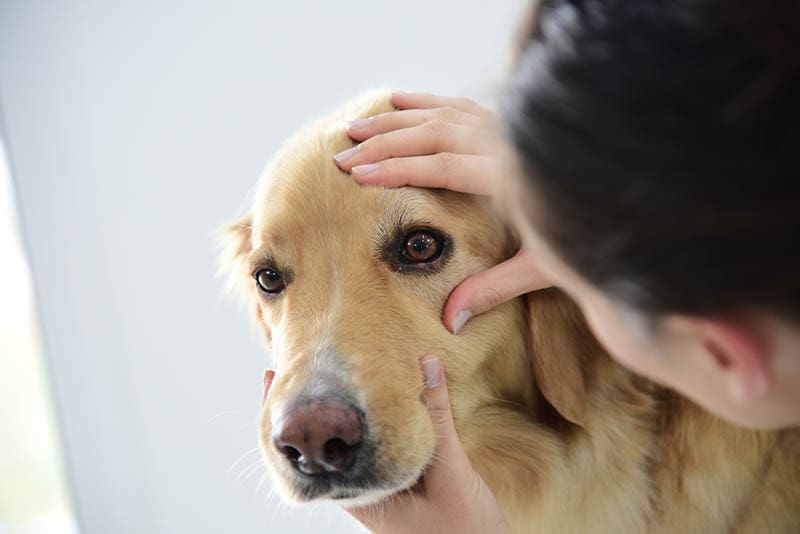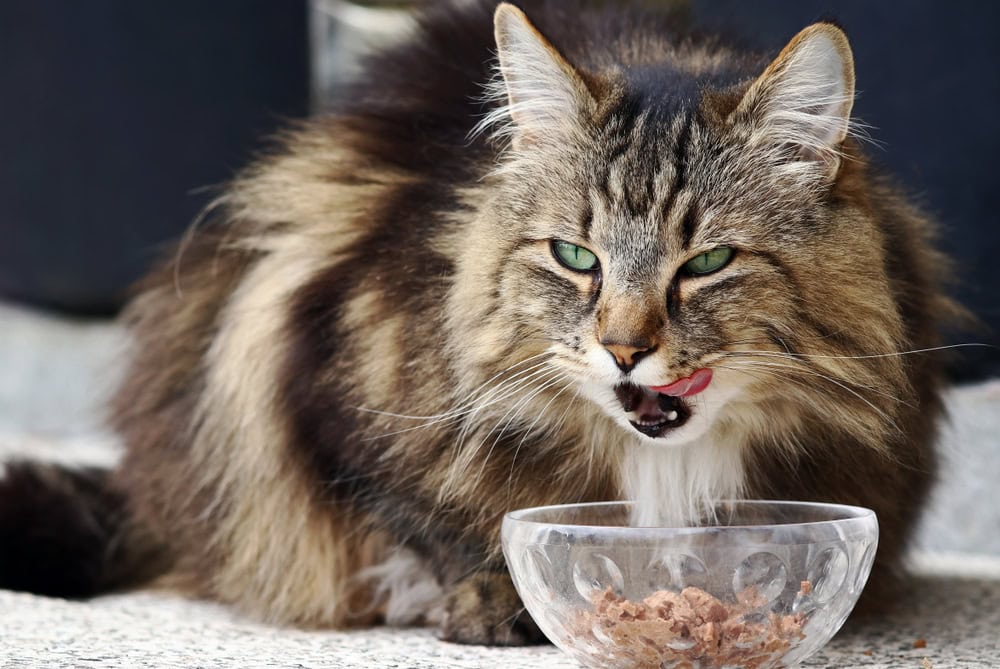Feline Upper Respiratory Infection: Our Vet Explains the Causes, Signs, & Treatments
Updated on
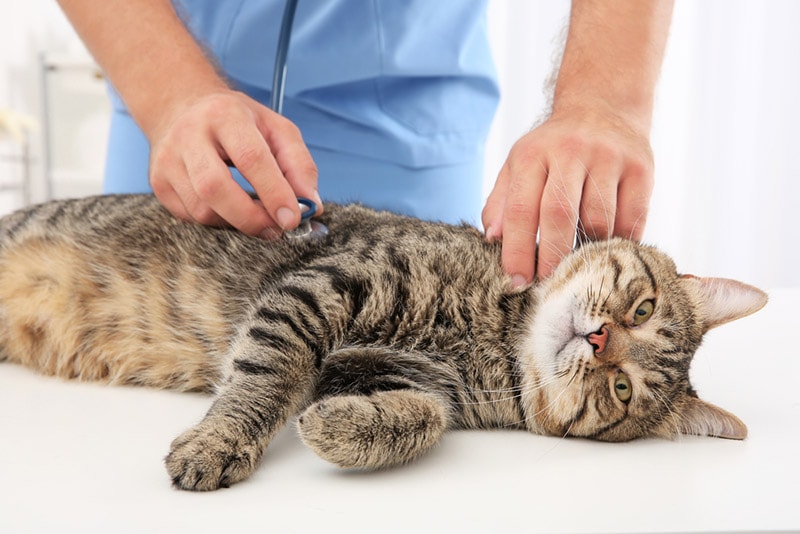
Click to Skip Ahead
Do you have a cat at home with a consistent sneeze or cough? What about having a chronically weepy eye? Have you ever seen them come down with what looks like a cold? Upper respiratory infections are incredibly common in cats, with up to 97% being exposed to just one common cause in their lifetime1.
With these infections being pervasive and the likelihood of repeat infections also high, it is important to know how to identify when your cat is suffering from an upper respiratory infection and how to help them.
What Is a Feline Upper Respiratory Infection?
The respiratory tract of a cat is broken into two sections, the upper and lower respiratory tract. Upper respiratory infections affect the nose, sinuses, mouth, and throat structures at the back of the mouth, like the larynx and pharynx. Since cats’ eyes sit immediately above their sinuses, they are also often affected. Upper respiratory infections need to be differentiated from conditions like bronchitis and pneumonia, which affect the lower respiratory tract, as the treatments often differ.
With upper respiratory infections of cats, various viruses, bacteria, and/or fungi harm the tissues of the upper respiratory tract, causing signs that we often describe as kitty cold symptoms. Viruses usually cause these infections and can resolve on their own, but sometimes veterinary intervention is needed for treatment or to help with supportive care while they get better.
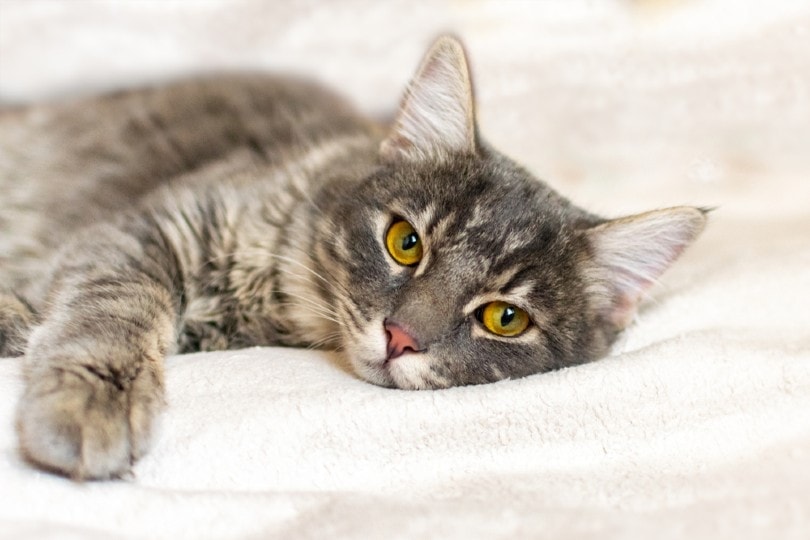
Signs of a Feline Upper Respiratory Infection
- Sneezing
- Nasal discharge (runny nose with or without blood)
- Eye discharge (may be clear or mucoid)
- Swollen eyelids or conjunctiva
- Squinting or excessively blinking one or both eyes
- Cough, usually wet
- Congestion
- Fever
- Oral ulcers
- Drooling
- Decreased appetite
- Lethargy
- Vocal changes
What Are the Causes of Feline Upper Respiratory Infections?
The most common cause of feline upper respiratory infections is feline herpesvirus type 1, which causes feline viral rhinotracheitis (FVR). Another common cause is feline calicivirus (FCV), and these two viruses account for approximately 90% of feline upper respiratory infections.
Bacterial infections are the next most likely causes of feline upper respiratory infections, and a majority of these will be caused by Bordetella bronchiseptica or Chlamydophila felis. You may recognize Bordetella if you have a dog. It causes very classic cold symptoms in both species. Chlamydophila felis can lead to swollen and red conjunctiva with runny eyes.
What Else Looks Like a Feline Upper Respiratory Infection?
There are some less common causes of feline upper respiratory infections, such as mycoplasma, reovirus, influenza, fungal infections, Toxoplasma, plague, and Pasteurella. In cases that are not progressing or resolving as expected, there are specialized respiratory panels a veterinarian can run to try and identify uncommon causes such as these.
Not all signs easily differentiate upper respiratory infections from other diseases. Other common conditions of cats that can be confused with an upper respiratory infection are asthma, heart disease, pneumonia, bronchitis, and stomatitis.
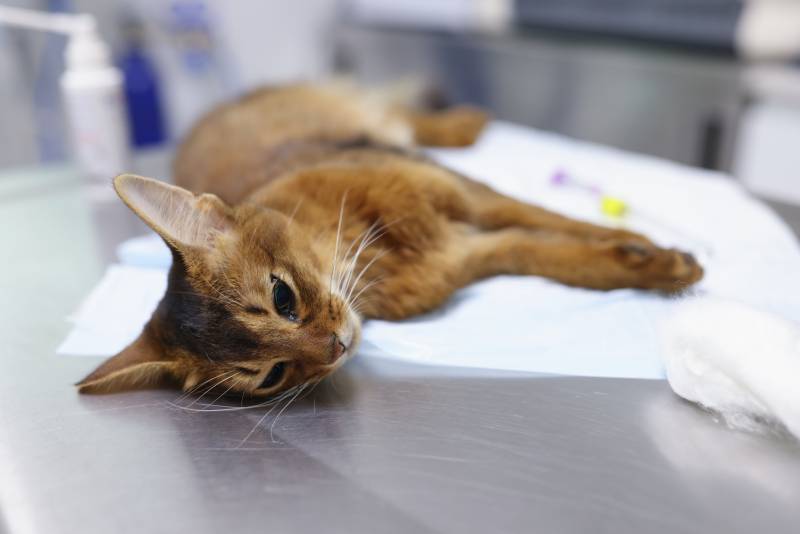
How Do Cats Get Upper Respiratory Infections?
Cats exposed to other cats, especially in high-stress settings, are the most likely to develop an upper respiratory infection. These infections are all highly contagious. They vary in how long they live in the environment on surfaces, but some will live even through a round of laundry and can only be killed with bleach. Additionally, cats can be contagious even after the resolution of signs.
Most infections only last one to three weeks. Herpesvirus is typically only contagious during periods of active signs or soon after, but other infections like calicivirus can be contagious for months. Herpesvirus infections may recur in the future during periods of stress or airway irritation.
Risk Factors for Upper Respiratory Infections in Cats
- Stressful events: Moving through a shelter, living outside, sudden temperature or weather changes, poor air quality, moves, introduction of family members or guests (animal or human), episodes of other illnesses, surgeries and more can trigger an upper respiratory infection.
- Age: Kittens are more likely than adults to show signs of infection and are also more likely to develop severe signs. Due to repeat stress events, infections are also more likely to drag on longer in kittens. Upper respiratory infections are rarely fatal but are more dangerous in young kittens.
- Facial features: Persian cats or others with flat faces (brachycephalics) are predisposed to upper respiratory infections. Their abnormal, smushed nasal passages are not as good at filtering irritants out of the air and it becomes easier for them to become infected.
- Past health issues: Previous upper respiratory infections make future infections more likely. Especially for herpesvirus, previous infections cause progressive damage to the tissues inside the nasal passage, making future infections and flare-ups more likely.
 How Are Feline Upper Respiratory Infections Diagnosed?
How Are Feline Upper Respiratory Infections Diagnosed?
In most cases, identification of signs of an upper respiratory infection will be enough for a diagnosis. With how overwhelmingly common herpesvirus is, usually running tests to confirm it is present is unnecessary. If a cat is only showing a couple of signs, such as a cough, which can be from upper or lower respiratory disease or even heart disease, it may be more important to screen all the common causes.
Blood tests and nasal, oral, or conjunctival swabs can be used by a veterinarian to check all the possible causes of respiratory signs in a cat as needed. In severe cases or those not responding to treatment, other tests may be requested such as chest X-rays, cultures, or lung washes.
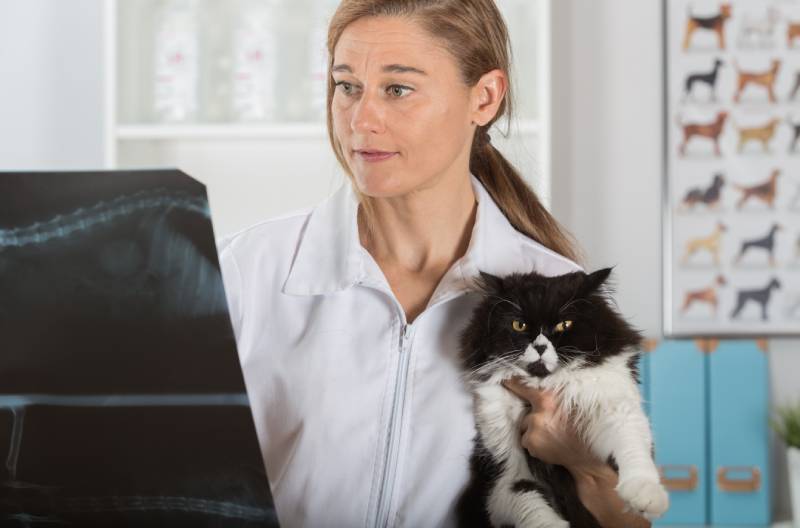
How Do I Care for a Cat With an Upper Respiratory Infection?
Most upper respiratory infections in cats can resolve on their own. Your cat may be uncomfortable during this time so most treatment comes in the form of supportive care.
- Isolation: Most upper respiratory infections will be due to herpesvirus, and most cats will already have herpesvirus. When a multi-cat household has one cat break with an upper respiratory infection, since they were likely contagious to the other cat before you realized there was a problem, and since the other cat(s) likely already have herpes, quarantining the cat is not strictly speaking required. An active herpes flareup in one cat can trigger flare-ups in others and of course, the infection may not be herpes, so isolation of the sick cat when possible is recommended.
- Humidity: Regardless of infection type, increasing the humidity of the air can help with congestion. Turning up a humidifier works well if you have one, but you can also place the congested cat in a bathroom that you then steam, for approximately 10–15 minutes, 4–6 times per day. Be sure to sit with them rather than leave them unattended and watch for signs that the treatment is either stressful or worsening their respiratory signs. Nebulizers can also be used in severe cases under the supervision of a veterinarian.
- Wet food: Since your cat’s throat may be sore and they may or may not have ulcers in their mouth, changing to wet diets or soaking dry diets can help them eat. Cats rely on their sense of smell when eating so another reason they may stop eating can be nasal congestion rather than pain, but canned diets also usually have a stronger smell and therefore can still help, as can heating their wet diet.
When to Seek Veterinary Intervention for Upper Respiratory Infections in Cats
Most upper respiratory infections in cats will resolve on their own and since they are most commonly caused by viruses, treatments from a veterinarian often help indirectly with symptoms rather than directly treating the virus.
- The cat has not eaten in over a day
- Severe lethargy
- Signs persist for more than two weeks or aren’t improving within one week
- Eye discharge is no longer clear
- Difficulty breathing, especially open-mouth breathing
- Vomiting or diarrhea
Even if all treatments are managed from home, it is recommended to still have a veterinarian check your cat at the first sign of infection to make sure it is being diagnosed correctly. Treatments a veterinarian may start can include antibiotics, which can still be useful even for viral infections as the antibiotic of choice can also be anti-inflammatory and help with secondary bacterial infections, decongestants, eye drops, appetite stimulants, pain medications, hydration support, and antivirals.
Frequently Asked Questions
How can I tell if my cat’s upper respiratory infection is improving?
- Energy levels improve
- Appetite returns to normal
- Decrease in signs such as sneezing, coughing, or nasal or ocular discharge

How can feline upper respiratory infections be prevented?
- Quarantine any new cats entering your household for two weeks
- Keep all cats living indoors only
- Control known stress triggers
- Vaccinate
What else do I need to know about feline upper respiratory infections?
Feline upper respiratory infections are highly contagious between cats but not transmissible to other pet species, children, or other family members except in very rare cases. It may not be possible to completely resolve signs of an upper respiratory infection in a cat and they may be contagious their whole life.
What is the antibiotic of choice for upper respiratory infections in cats?
Doxycycline, treats not only respiratory bacterial infections but can be anti-inflammatory as well, which can help with herpes infections.
Are upper respiratory infections in cats fatal?
Most upper respiratory infections in cats are not severe and will resolve on their own. While medical treatment or hospitalization may be needed, death from an upper respiratory infection is rare and almost exclusively a concern for very young kittens.
Conclusion
Feline upper respiratory infections are incredibly common and are usually caused by viruses. Though they can resolve on their own and be treated from home in most cases, it is recommended to still notify your veterinarian at the first sign of an infection (sneezing, coughing, loss of appetite, nasal or ocular discharge, congestion, lethargy, drooling). These infections are highly contagious but can be prevented with vaccinations and lifestyle adjustments.
You will want to focus on providing supportive care for the signs of infection your cat exhibits to help keep them comfortable as they recover. Though kittens are most often affected, cats of any age can become sick with an upper respiratory infection.
Featured Image Credit: Africa Studio, Shutterstock


 How Are Feline Upper Respiratory Infections Diagnosed?
How Are Feline Upper Respiratory Infections Diagnosed?
